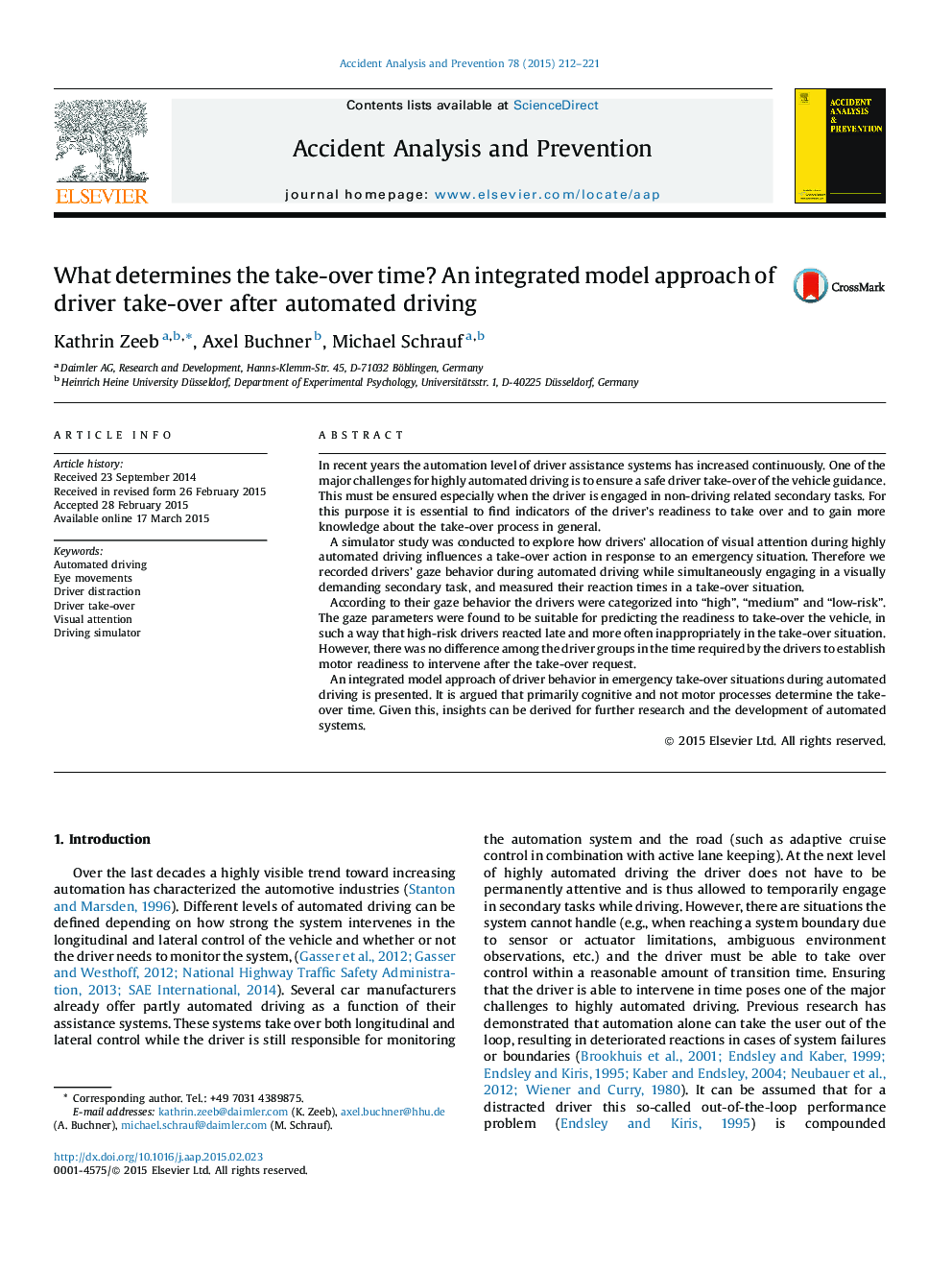| کد مقاله | کد نشریه | سال انتشار | مقاله انگلیسی | نسخه تمام متن |
|---|---|---|---|---|
| 572244 | 1452919 | 2015 | 10 صفحه PDF | دانلود رایگان |
• A driving simulator study on highly automated driving on the highway was conducted.
• The influence of the drivers’ gaze behavior on driver take-over was examined.
• Drivers were classified into different risk groups according to their gaze behavior.
• High-risk drivers reacted later and less adequately when taking over the vehicle.
• A model approach of driver behavior in take-over situations is presented.
In recent years the automation level of driver assistance systems has increased continuously. One of the major challenges for highly automated driving is to ensure a safe driver take-over of the vehicle guidance. This must be ensured especially when the driver is engaged in non-driving related secondary tasks. For this purpose it is essential to find indicators of the driver’s readiness to take over and to gain more knowledge about the take-over process in general.A simulator study was conducted to explore how drivers’ allocation of visual attention during highly automated driving influences a take-over action in response to an emergency situation. Therefore we recorded drivers’ gaze behavior during automated driving while simultaneously engaging in a visually demanding secondary task, and measured their reaction times in a take-over situation.According to their gaze behavior the drivers were categorized into “high”, “medium” and “low-risk”. The gaze parameters were found to be suitable for predicting the readiness to take-over the vehicle, in such a way that high-risk drivers reacted late and more often inappropriately in the take-over situation. However, there was no difference among the driver groups in the time required by the drivers to establish motor readiness to intervene after the take-over request.An integrated model approach of driver behavior in emergency take-over situations during automated driving is presented. It is argued that primarily cognitive and not motor processes determine the take-over time. Given this, insights can be derived for further research and the development of automated systems.
Journal: Accident Analysis & Prevention - Volume 78, May 2015, Pages 212–221
